Marnette Gordon was doing laundry at home in Minneapolis one summer morning last year when a call came from her 36-year-old son.
She figured her son, Telly Blair, was checking in to see if she wanted a soda from a gas station down the street, where he often went for fuel and snacks.
“Mom, I’ve been shot,” he said. “Call the police!”
Marnette, her other son Tamarcus and his 12-year-old daughter rushed to the gas station from their home in the city’s north side, a part of town long beset by violent crime.
Blair’s family came upon his blue 1986 Chevy Caprice at pump No. 5 — beating police and paramedics by a few minutes, they said — only to find him slumped in his car, bleeding from multiple bullet wounds in his chest. A 17-year-old male in an orange hoodie had fired nine rounds from a handgun into Blair’s car before running off.
While an off-duty nurse in scrubs who’d been at the gas station tried to stop his bleeding, Marnette — a heart-transplant recipient — couldn’t bear to watch and stood at a distance. Telly was her caretaker.
“It was just horrible to see him sitting there, waiting on the ambulance,” she told CNN.
The 12-year-old called 911 while watching her uncle struggle to breathe.
“Oh my God, please,” the girl, who was crying, said to a dispatcher, according to 911 transcripts of the August 9, 2021 shooting obtained by CNN. “Hurry up, hurry up, hurry, hurry, he’s dead, hurry up!”
Telly Blair was among 93 people who were murdered in Minneapolis last year, city crime data shows. That’s just a few shy of the total killings in 1995, when the city earned the nickname “Murderapolis.” (Neighboring St. Paul witnessed 38 murders last year — a historic high.)
After the police murder of George Floyd in May of 2020, Minneapolis became a worldwide symbol of the police brutality long endured disproportionately by Black people. In a kind of Newtonian response, the city became the epicenter of the culturally seismic “Defund the Police” movement. But that progressive local effort fizzled with a decisive referendum last November.
Now, with its police department under investigation by the Department of Justice, the city of 425,000 is trying to find a way forward amid a period of heightened crime that began shortly after Floyd’s death.
That year, the number of murders soared to nearly 80 — dwarfing the 2019 body count of 46. It has cooled somewhat this year, though the amount of killing — and violent crime in general — remains elevated far above 2019 levels and homicides are on pace to surpass the 2020 figure. The reasons why are far from clear.
KG Wilson, a longtime resident of the Twin Cities, said police withdrew from violent neighborhoods in the aftermath of Floyd’s killing — a common sentiment among locals.
“The criminals were celebrating. They were getting rich,” he said. “They were selling drugs openly.”
Wilson told CNN the violence devastated his own family: His 6-year-old granddaughter was killed in May of 2021 after getting caught in the crossfire of a gunfight in north Minneapolis. The culprit remains at large.
Another factor was the pandemic, which some observers see as the biggest impetus for the crime surge.
“It unsettled settled trajectories,” said Mark Osler, a former federal prosecutor who is now a professor at St. Thomas School of Law in Minneapolis. “Kids who were going to school, who would have graduated but drifted off because there is no school — we’re seeing a lot of the violent crime is by juveniles.”
Citing sinking morale in the wake of the unrest after Floyd’s killing, leaders at the Minneapolis Police Department say the officer head count has shrunk from 900 in early 2020 to about 560 in August — a loss of more than a third of the force.
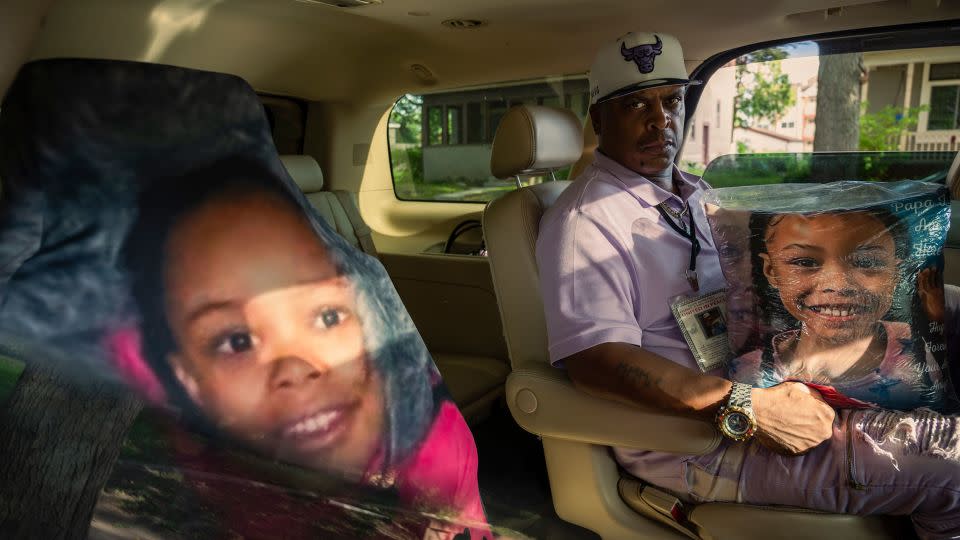
Against this backdrop, the political pendulum on public-safety matters in this reliably liberal city — the “Mini Apple” hasn’t had a Republican mayor since 1973, and that was for just a single day — seems to have swung away from a progressive mindset towards the middle.
And on matters of public safety, the middle is where many of the city’s Black residents already were.
Last year, progressives touted a ballot measure that was said to be a referendum on the “defund” concept. Question 2, as it was known locally, would have replaced the Minneapolis Police Department with a new “public health-oriented” Department of Public Safety and removed a minimum staffing requirement from the city charter.
It failed in November, with 56% of voters rejecting it. That figure was 61% in north Minneapolis, a pair of neighboring city wards where Blacks make up a strong plurality of the roughly 66,000 residents. All but one of the 17 precincts in the north voted against the measure.
“We did not believe that the police should be defunded, but we do believe in police reforms,” said Bishop Richard Howell of Shiloh Temple, a north-side church founded more than 90 years ago.
Rae McKay-Anderson — Telly Blair’s sister — said “you can’t possibly defund the police in a way that’s going to benefit the Black community.”
Dealing the final blow to the local “defund” movement last year was a city council vote to essentially refund a cut they’d made the prior year. Mayor Jacob Frey is proposing another budget bump for the next two fiscal years.
The question of the moment is, if the police budget has been restored, and if all the anti-cop shouting by politicians and activists that left officers demoralized has weakened to a whimper, why are citizens — especially in the rough parts of north Minneapolis — still feeling neglected by police and fearful for their safety?
A feeling of lawlessness, a sense of neglect
Residents of the north side describe a landscape that can feel lawless. Indeed, about 60% of police calls for shots fired this year have come from the area, even though it makes up just 15% of the population, according to city data.
Paul Johnson, 56, said young men openly sell drugs during the day in public places, such as a gas station on Broadway Avenue that has been dubbed the “murder station” due to all of the fatal shootings there. (It is near the one where Blair was killed.)
“You pull up to get gas – they try to sell you drugs,” he said. “And not just three or four, but it’s a bulk of people.”
The perception among many residents is that the police ignore the area.
“They just let it go on,” said Johnson’s friend, Brian Bogan, 42, who said he moved from north Minneapolis to relatively safer St. Paul due to his kids growing up in an area where they don’t know if “it’s fireworks or gunshots.”
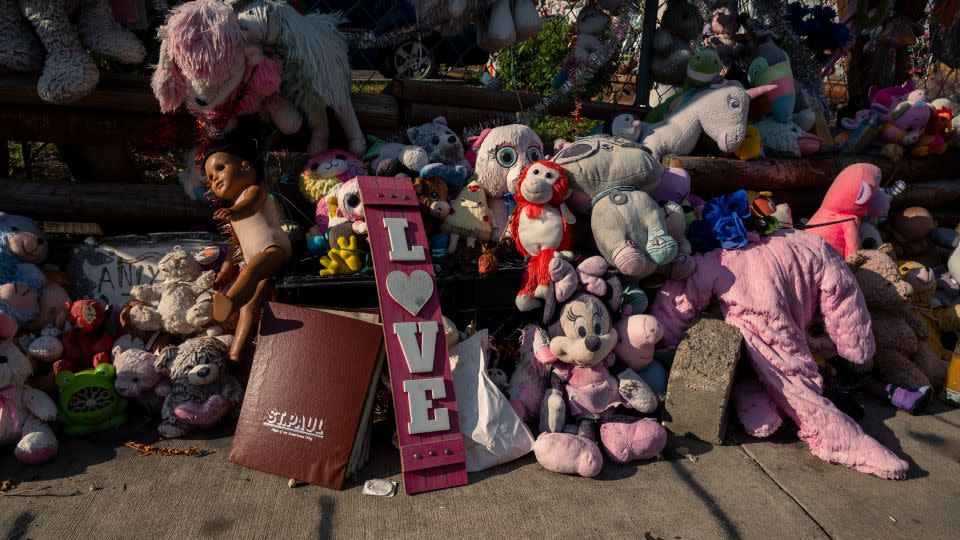

While Minneapolis is far from the nation’s most dangerous city, its rate of increase in homicides — the count in 2021 was about double that of 2019 — is among the highest in the nation, said Richard Rosenfeld, a criminologist at the University of Missouri- St. Louis and co-author of an annual study on crime trends.
On per-capita murders, it has ranked fairly high — 19th out of 70 jurisdictions in the US — during the first half of this year, according to the Major Cities Chiefs Association. The city ranked even higher on other per-capita crime measures, such as robbery (4th), rape (8th) and aggravated assault (13th).
Juliee Oden, 56, can’t even count the times she has called 911 to report gunfire outside her north-side home. One night last summer, a volley of shots jolted her out of bed while she was watching TV — it was coming from her front lawn.
“I hit the floor,” she said. “My phone went flying. I had to crawl on my stomach to get to the phone” to dial 911.
It got to the point where it was hard to sleep at night and Oden, who works at a construction company, had colleagues install a bulletproof panel behind the headboard of her bed.
“Now I go in my room with complete confidence,” she said. “If somebody is to shoot directly at my house, I know: As long as I’m behind my headboard, I’m 100% safe.”
Oden was among eight residents in north Minneapolis who filed a lawsuit in the summer of 2020 calling on the city to replenish the police department by filling vacant positions. The suit singled out city council members who supported the “radical ‘dismantle the police’” idea and accused them and Mayor Frey of creating a “hostile” environment for the police. It was largely upheld by a state Supreme Court decision this summer — meaning the city needs to staff up to at least 731 police officers.
Doug Seaton, an attorney representing the eight residents, said the successful suit was filed in direct response to how progressive city council members had embraced the “defund” idea. It demoralized the police department and ultimately led to a mass exodus of officers, he said.
“That is, we think, the major reason that crime has spiked throughout the city and hasn’t gone away yet,” Seaton said.
Meanwhile, as the MPD headcount has shrunk, wait times have grown for people who call 911 to report serious “priority 1” incidents, which can include shots fired, robberies, assaults and mental health crises.
Average 911 response times jumped the very month of Floyd’s death — May of 2020 — from around 10 or 11 minutes early that year to 14 minutes, according to public records obtained by CNN. They kept rising in 2021 to 16 minutes; response times in the north side’s fourth precinct last year actually surpassed 17 minutes, where they remain.
Some nights are so busy that the dispatchers are directed to hold all non-priority-1 calls citywide; these would include reports of property damage, suspicious persons or theft. That happened during a frenetic five-hour stretch on the night of September 8, when officers responded to multiple shootings and calls for shots fired — many of them in north Minneapolis; one near the “murder station” — that left two dead and seven wounded.
The Minneapolis Police Department has even flatly refused to respond to certain crimes in a timely manner. One couple who run a property management business recently took it upon themselves to investigate the theft of their van, box truck and tools by a culprit who brought the stolen goods into a homeless encampment on the north side, according to local news reports.
Police told KARE 11 that the hostility towards police on the part of some encampment dwellers compels them to take a slower approach when investigating property crimes there.
But by and large, police officials have said the slower response times are the expected byproduct of a depleted force that has witnessed an overwhelming wave of retirements, resignations and disability leaves due to post-traumatic stress.
Much of that exodus owes to a bottoming out of morale in the wake of a crisis that left police officers feeling reviled, said interim Minneapolis Police Chief Amelia Huffman.
“There’s really been a very fundamental challenge to our sense of purpose in law enforcement,” Huffman said of the post-Floyd era. “(Minneapolis) is the eye of the storm. So all of those challenges and the pressure is magnified, you know, a hundred fold – a thousand fold.”
Similar headcount plunges have plagued police departments from coast to coast.
Some law enforcement officials have attributed the mass resignations and retirements to pandemic-related reasons, but Sgt. Betsy Brantner Smith of the National Police Association said morale is a major factor.
“It’s no secret that law enforcement … especially in the last two and a half years, has been badly vilified and wrongly vilified,” she told CNN. “You can’t call an entire profession racist and expect people to just sit back and say, okay, you know, keep piling on.”
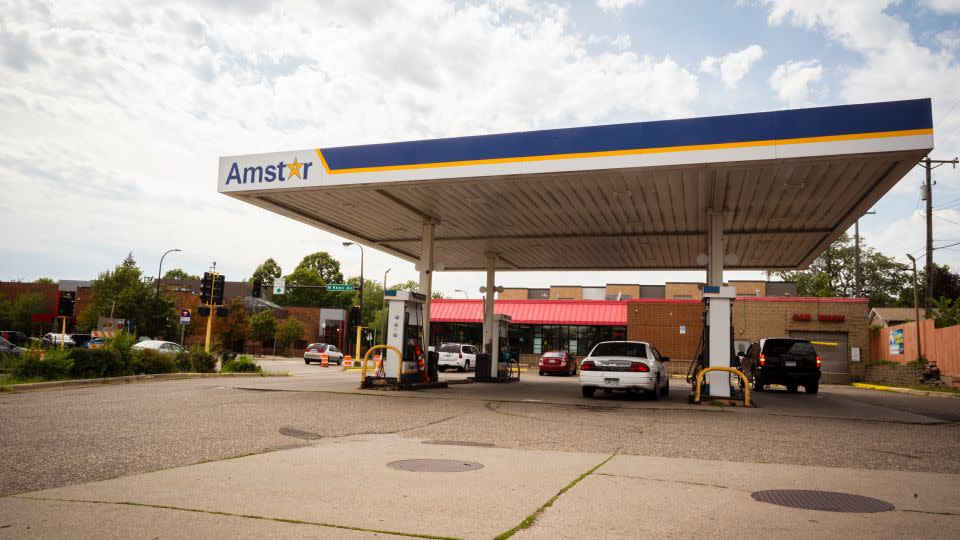

In June, the embattled Minneapolis department was hit with more bad press — this time for its abysmal numbers on unsolved murders in recent years.
Since 2016, the clearance rate (or the percentage of homicide cases closed) in Minneapolis sank from around 54% — the most recent national average — to 38% in 2020, according to the latest available data from the FBI. Figures for last year haven’t been released by the FBI, but Huffman insists the rate has improved considerably, claiming that the unofficial figure for this year to date is back to 54%.
Even so, some family members of murder victims say they have felt compelled to take a lead role in the homicide investigations of their own loved ones.
Residents take matters into their own hands
Among them is Dorothy Royston, a 26-year-old healthcare professional who said she spent weeks proactively feeding police information shortly after her unarmed younger brother, Charles Royston Jr., was gunned down on a snowy street in north Minneapolis on a January night in 2021, according to police reports.
“They had a lot of the information or the logistics of what was – like bullet casings and stuff like that,” Dorothy said. “But when it comes to who was involved with the actual shooting, who was around – and the people information? I actually provided that to the police.”
Dorothy provided CNN with text messages between her and a lead investigator on the case. In February of 2021, the investigator told her in a message that there would be a warrant out for the arrest of a suspect by the next day. He still hasn’t been arrested, Dorothy said.
She said communications from the investigator fell off around March of 2021.
A couple months ago, about a year and a half after the killing, Dorothy said, she called the investigator to ask for an update.
“He told me that he was currently doing something and that he would call me back,” she said. “He never called me back.”
(The investigator agreed to talk with CNN, but a police spokesperson called off the interview. )
Taken together, the current state of crime and policing in Minneapolis — from slow response times to recent brutality complaints to the poor clearance rates — has fostered an atmosphere of distrust.
The distrust paves the way for some to assume bad intentions. Dave Bicking, a board member of the Minneapolis-based Community United Against Police Brutality, goes so far as to suggest the police since Floyd’s death may have engaged in a “sickout” — that is, that officers are purposefully sluggish to respond to or investigate certain crimes.
“It’s still going on to a considerable extent — it was dramatic in the beginning,” Bicking told CNN. “The police would simply, if they showed up at all, say, ‘Oh, we don’t have anybody to deal with that,’ or ‘You people don’t want us here, so we’re not going to do anything.’”
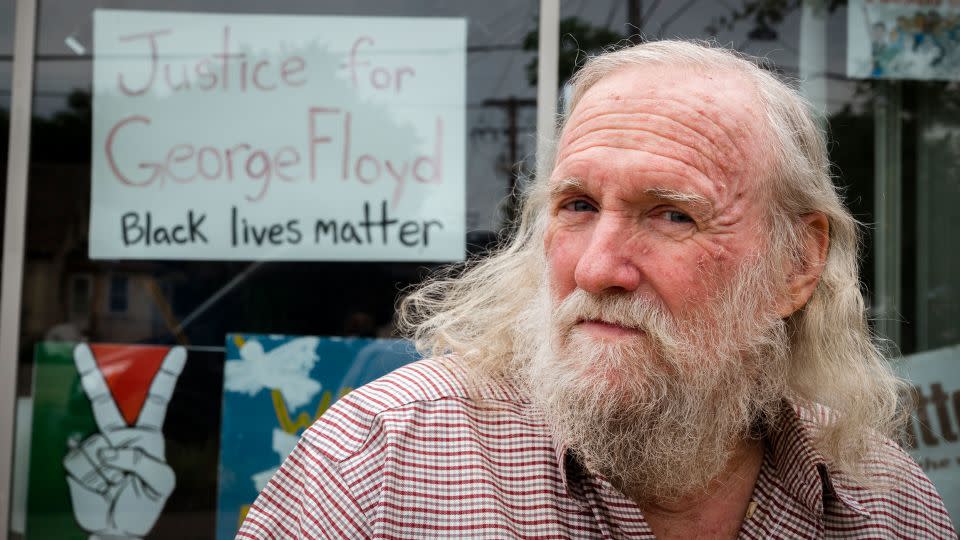

Bicking, who has been publicly critical of the “defund” tactic from the get-go, said he bases the sickout claim on a drop-off in jail bookings shortly after Floyd’s death and on more than 2,300 interviews the CUAPB has conducted over the past year and a half with Minneapolis residents about their experiences with the MPD.
He added that the CUAPB persuaded the Department of Justice to include in its investigation of the MPD the alleged lack of Minneapolis police investigations into murders of people of color.
Chief Huffman did not respond to follow-up questions related to sickout allegations, but in her earlier interview with CNN she said Minneapolis has unique challenges.
For one, she said, Minneapolis has a relatively low rate of domestic murders, which are typically easier to solve, and a high rate of gang murders, which are more difficult.
But the bigger factor again comes down to attrition. Huffman said the Minneapolis Police Department has lost about 100 investigators in its investigations bureau since early 2020.
Still, Huffman said the MPD is committed to solving homicides, adding that unsolved murders can have serious negative repercussions that ripple through communities for years and devastate families.
“The lack of justice for families who have had family members murdered is completely unacceptable,” she said. “And it’s incumbent on us to make sure that we’re doing everything we can to solve those cases.”
Huffman’s new boss, Cedric Alexander — who was hired in August as the city’s first ever community safety commissioner — said he understands the community’s frustration.
“When you have a body drop and another body drops and another body drops, what you have oftentimes is ongoing violence – it certainly does overwhelm an agency that already is struggling with a great deal of shortages,” he told CNN. “It does give people the perception nothing is being done. But I can assure you that it is. And in any of these violent cases where we have victims, it is taken at a very high priority.”
How ‘defund’ failed
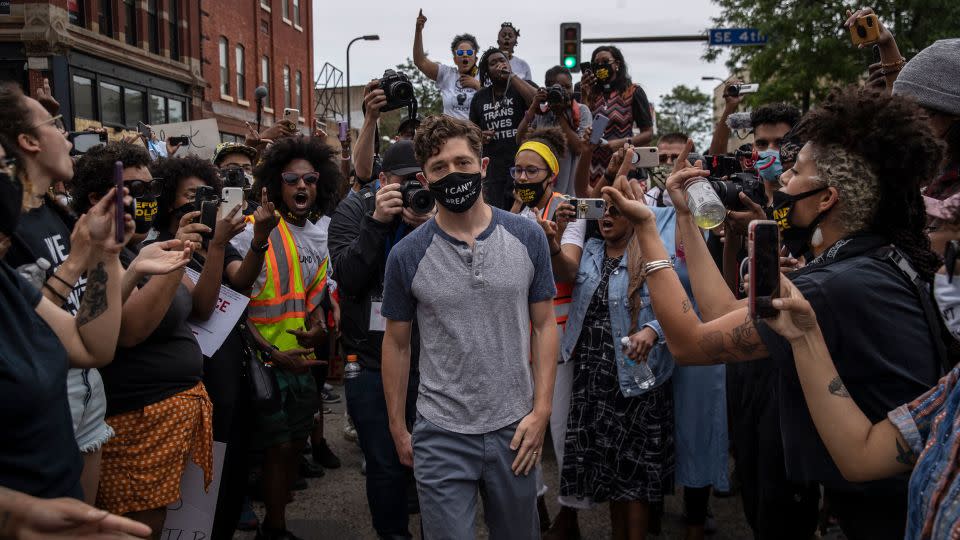

In June of 2020, nine of the Minneapolis City Council’s 13 members stood on a stage adorned with an oversized sign saying “DEFUND POLICE.”
Around the same time, in another spectacle that made national news, Mayor Frey was booed and jeered by activists at a George Floyd protest near his home for saying — in response to a question — that he did not support “the full abolition of police.” As he walked away, the crowd broke into a “Go home Jacob!” chant.
“It was a lonely walk,” Frey told CNN recently. “At that moment there was a very loud chorus of people, including elected officials … that were all calling very loudly to defund the police.”
It’s well established that those widely viewed events boosted a movement in Minneapolis that would later fail at the polls last November. Lesser known is how the very community most directly impacted by crime and policing in the city — the north side — was among the least supportive of the “defund” idea.
“I think what’s at issue is the White progressives’ belief that they’re helping us,” said Lisa Clemons, a former Minneapolis police officer, who is Black and runs a gun-violence organization called A Mother’s Love in north Minneapolis. “Oftentimes they are hurting us.”
Clemons said people in north Minneapolis don’t want to get rid of cops – “they just want respectful cops.”
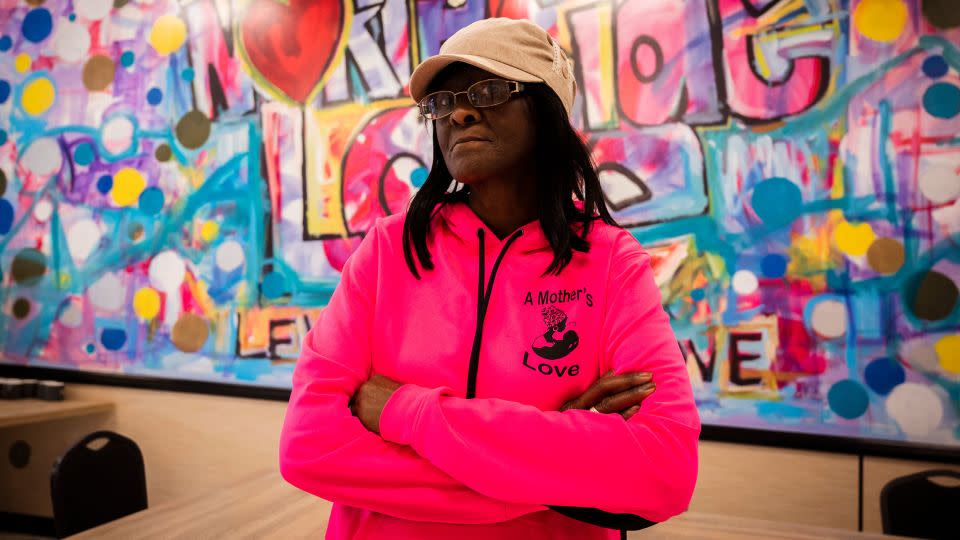

Minneapolis voters not only resoundingly rejected what was seen as the “defund” initiative, they also voted to strengthen the office of the mayor and reelected Frey, who’d become a local avatar for moderate Democrats put off by the party’s most liberal wing.
The Minneapolis area with the largest Black population — Ward 5 on the north side — also proved a strong base of support for Frey in his reelection, according to a CNN analysis of voter data.
Frey said that while no demographic group is a monolith, White progressives in the aftermath of Floyd’s death often seemed out of sync with ordinary Black residents.
“I heard a lot of White activists purport to be speaking on behalf of communities of color. And I was listening to them — listening to communities of color — and they weren’t saying the same things,” Frey said. “I’d walk down the street and I’d hear from White people, ‘Defund the police! Defund the police!’ And then I’d hear from a Black person a half block later, ‘Hey, we really need to have some additional help.’”
Sheila Nezhad, a community organizer who turned out to be one of Frey’s most competitive mayoral opponents in November, noted that turnout was lower in north Minneapolis than the citywide average, and that the advocacy group — called Yes 4 Minneapolis — that proposed the ballot measure that came to be seen as the “defund” referendum was led by Black people.
“And I’m not White,” she said. “So when Jacob Frey talks about only White people want to defund or whatever … I think that he is perhaps shaping the narrative to benefit his political goals.”
Even before Floyd’s killing, the MPD had drawn criticism for its approach to policing the Black community.
In 2016, anti-police protests erupted after it was announced that two Minneapolis officers involved in the shooting death of Jamar Clark – a 24-year-old Black man who scuffled with the officers and, according to authorities, reached for one of their guns — would not be charged. Two years later, after responding to calls of a man shooting a gun in the air, police chased and fatally shot 31-year-old Thurman Blevins, who said “please don’t shoot me” as he ran away from them; body cameras showed officers yelling at him to drop his gun. Police say Blevins turned with his gun toward the officers, who ultimately were not charged.
And then came May 25, 2020. In a nine-minute video that seemed to last an eternity, a police officer defiantly knelt on the neck of a handcuffed, face-down Floyd, whose pleas for help went unanswered until he fell silent. Now infamous, the officer, Derek Chauvin – who’d already had 18 prior complaints filed against him – was convicted of Floyd’s murder and sentenced to 21 years in federal prison.
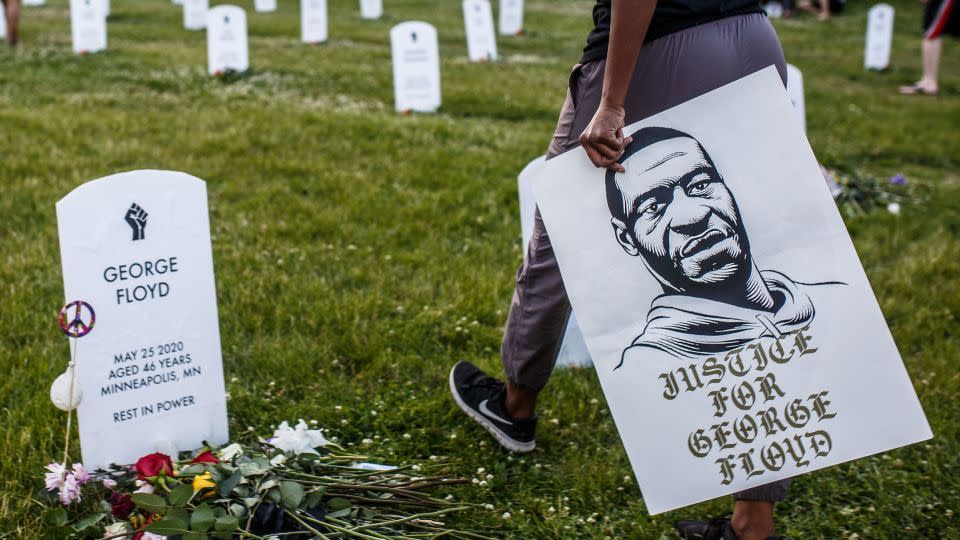

“For me, it was a moment of deep grief,” said Nezhad, who still wants to abolish the Minneapolis Police Department. “And the days that followed offered a glimpse into just how ready so many people are for massive change.”
In April, the Minnesota Department of Human Rights released a report, two years in the making, charging that the Minneapolis department’s officers have engaged in a pattern or practice of race discrimination when conducting traffic stops or using force. It called for ordering a consent decree, which is essentially a court-enforced settlement to reform the department. The report also blasted the MPD for “ineffective accountability,” saying that “almost every investigation of a police misconduct complaint against an MPD officer … is assessed or guided by sworn MPD officers.”
The city is in negotiations with the human rights department over the consent decree, and Frey has indicated that some of his budget priorities are in direct response to the report.
Don Samuels — a former Minneapolis City Councilman who surprised political observers this summer by nearly defeating US Rep. Ilhan Omar, an icon of progressive politics in America — said the video of Floyd’s death was the most “evil thing I had ever seen.”
“That was so painful — just painful to watch and to see a Black man, of dark complexion, under the knee of a dispassionate White male,” Samuels said. “It conjured up all kinds of slavery imagery.”
And yet, Samuels, a 73-year-old immigrant from Jamaica — who lives in one of the most dangerous neighborhoods of north Minneapolis — experienced another kind of dismay when he saw the nine council members on the Defund stage while watching the news on TV with his wife.
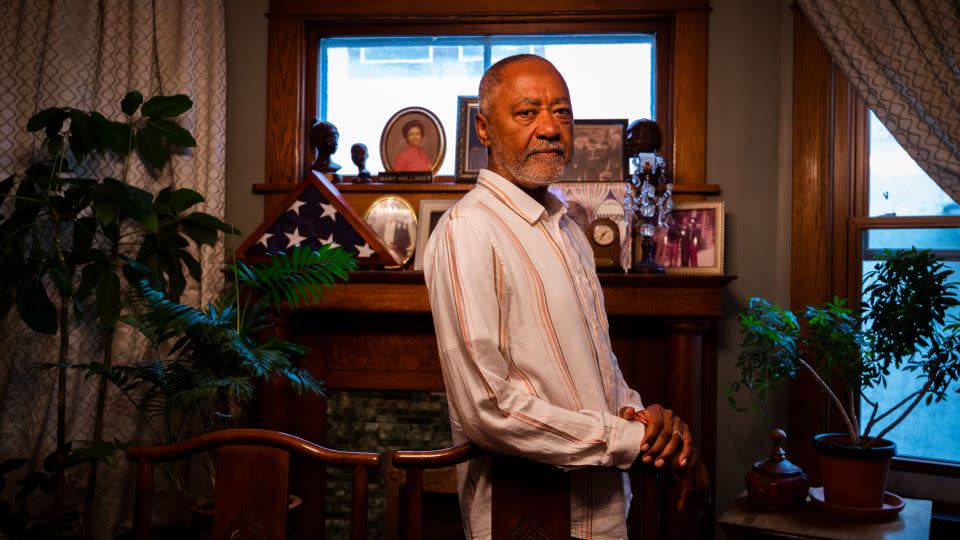

“It was like a World Trade Center moment for us,” he told CNN. “Our jaws fell to the floor. Literally, we were aghast. We looked at each other and said, ‘Oh, my God. It’s going to be Crime City in Minneapolis.’”
That summer, Samuels joined the residents of north Minneapolis who sued the city for its police shortage. Half of the plaintiffs are Black.
During his campaign for Congress, Samuels ran a kind of middle-ground campaign on public safety.
“We don’t have to choose safety or police – we can have both/and,” Samuels said at a town hall campaign event in August. “Let’s get rid of the bad police, let’s fix the fixable police.”
He lost, but the “both/and” approach appears to be the current path that the city of Minneapolis is on.
‘Both-and’: A post-Defund approach
On a morning this August, in a scene that offered a sharp contrast from two years ago — when Mayor Frey made his “lonely walk” through an angry crowd — he and Commissioner Alexander, both smartly dressed, strode triumphantly through corridors of City Hall.
Alexander, a 67-year-old former deputy sheriff with a doctorate in psychology who was hand-picked by Frey, had just been confirmed as the city’s community safety commissioner in a contentious council meeting. His newly created position amounts to the first piece of Frey’s proposed plan to combine 911, police, fire, neighborhood safety and emergency management under one roof.
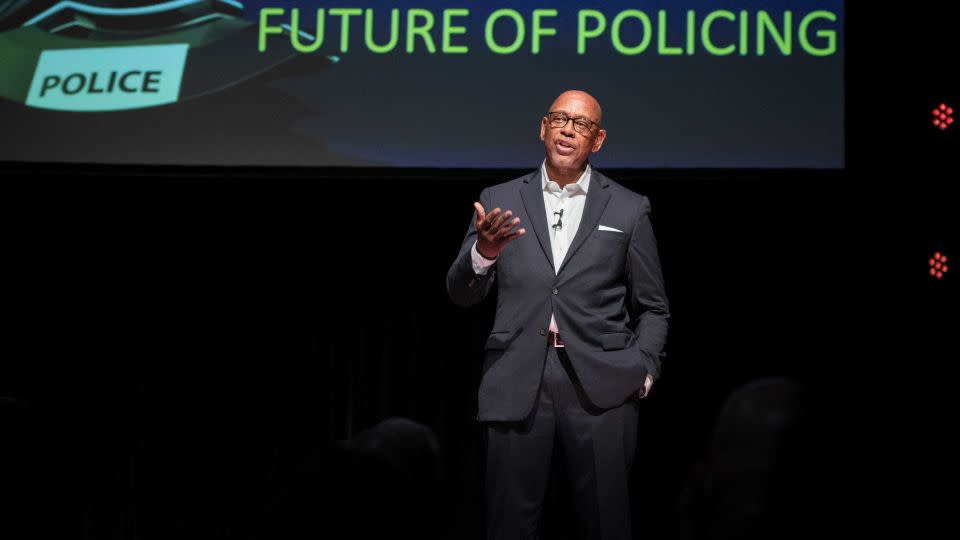

“The number one, first priority is the fact that people in this community don’t feel that they’re safe,” said Alexander — who served on the 21st Century Task Force on Policing under former President Barack Obama — during an impromptu press conference minutes after his hiring. “The fact is that we have violent crime that’s occurring, and occurring way too frequently.”
Alexander, who retired in 2017 as the public safety director in DeKalb County, Georgia, in the metro Atlanta area, added that the MPD isn’t likely to become fully staffed overnight — “probably not even in our careers” — and stressed the importance of data-driven policing and building relationships.
“If we don’t build relationships with these people in our communities, you ain’t solving crime nowhere,” said Alexander, a former CNN contributor on law enforcement issues.
Osler, the St. Thomas professor, said at the moment, people don’t want to work for the MPD, “where officers are not respected. And to be straight-up about it, MPD earned that lack of respect.”
In the meantime, he said, the department needs to focus on two key metrics: improving homicide clearance rates and executing search warrants for violent criminals, which, Osler acknowledged, is no easy feat.
“Think about it from the perspective of the person executing that warrant,” Osler said. “You’re going to bust down the door and who you know is on the other side is someone who’s probably already shot somebody. That’s a tough job. No wonder people don’t want to do it.”
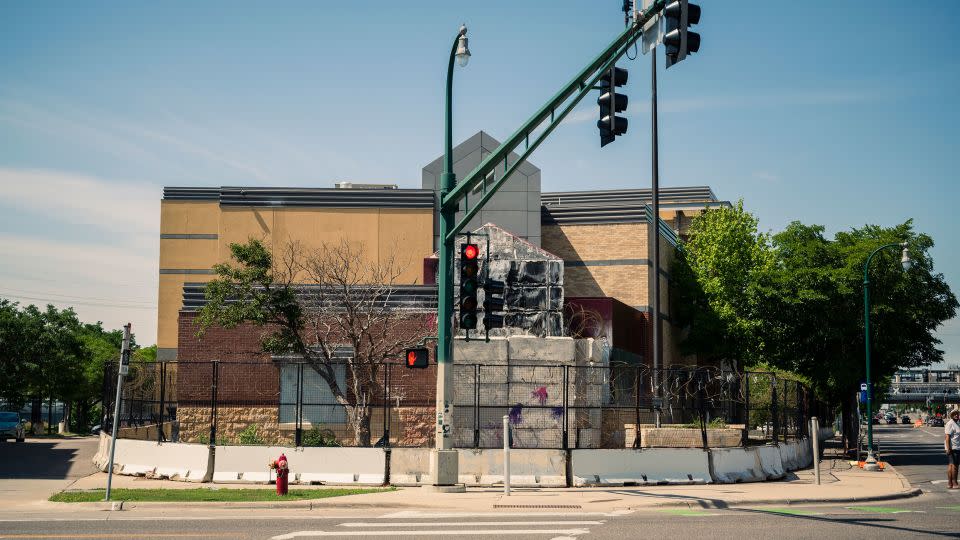

On the policy front, the wheels of change seem to be grinding forward, however slowly.
Since Gov. Tim Walz signed a police accountability law two years ago that banned chokeholds and “warrior” style police training, the city of Minneapolis appears to be finding a path forward that avoids having to choose between building the police force and reimagining public safety. The city is not only looking at further beefing up the police budget but is also piloting a slate of programs that send unarmed responders to nonviolent 911 calls. Mayor Frey has proposed making them permanent in his recommended budget for 2023-2024.
Frey argues that the centerpiece of his proposed public safety plan – creating a new Office of Community Safety — captures much of what the “defund” movement was after in the first place.
The concept is to “match the best possible people with what is actually being experienced on the street,” Frey said. “Anybody who was for that before but is not for it now is pretty disingenuous.”
When it comes to hiring, the MPD is trying to entice young blood with incentives — for instance by covering the cost of tuition for potential recruits who need law-enforcement coursework but only have a high school degree. It’s a big challenge — not just because so many officers have left, but also because there is a shortage of young people across the country getting into law enforcement, Alexander said.
The city has made headway when it comes to filling the top job: Frey recently announced three finalists — all of them from outside Minneapolis — for the permanent chief position, which Huffman has filled on an interim basis since December.
Last summer, the police presence in the city was so thin — and the rate of violence so high — that a group of volunteers in the faith community went to heroic measures to break the cycle.
The idea was simple. In an initiative called 21 Days of Peace, church volunteers simply hung out in some of the most deadly neighborhoods to engage in violence prevention.
The effort was considered a success, but for one volunteer it came at a cost.
Gloria Howard, a grandmother, had just handed out snow cones to two women with young children at one of the violence hotspots near a liquor store on Broadway Avenue when a barrage of gunfire sent people scattering.
Howard crumpled to the ground. When she tried to get up, she couldn’t — she’d been shot twice.
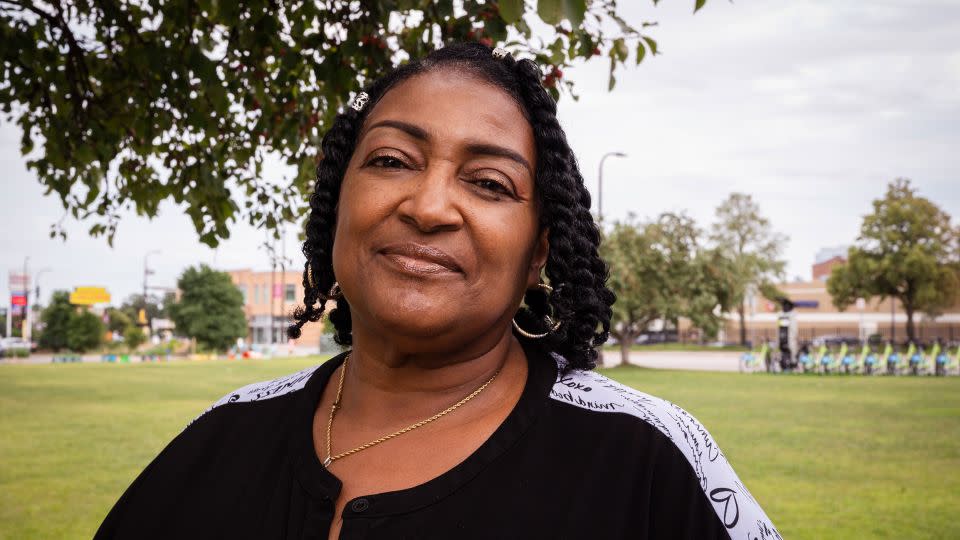

People from a nearby church rushed out of the building to render aid and call the police.
“When I got to the hospital, the doctors were like, ‘Well, you’re some lucky lady and you must be somebody special because you have no metal fragments in your body,’” Howard said. The bullets, she said, “went through and through.”
Howard, who was against the “defund” initiative, said there are specific reforms she would like to see, starting with a push to require more officers to live in the city they serve.
(A 2017 Star Tribune report found that just 8% of MPD officers lived in Minneapolis. Chauvin lived in the suburb of Oakdale, where nearly 72% of the residents are White.)
“All Black men are not big and scary,” Howard said. “All Black women are not angry. So, you know, you have to be able to know the community.”
But she realizes that even with such reforms, improvement would take time.
“I don’t even walk Broadway anymore,” Howard said, while eying the thoroughfare from a distance, close to where she was shot. “I’ve seen the cars speeding up and down when they’re chasing each other. And then when they start shooting, it can come from anywhere. So I don’t even do that anymore. And I never used to be afraid coming over here.”
For more CNN news and newsletters create an account at CNN.com
Source Agencies


